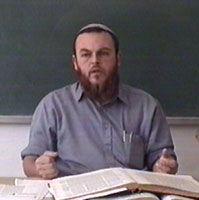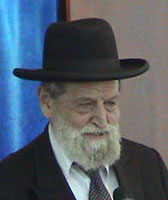Beit Midrash
- Torah Portion and Tanach
- D'varim
- Re'e
The Torah study is dedicatedin the memory of
Hana Bat Haim
Where is Har G’rizim? The accepted identification is a mountain that stands to the west of the city of Shechem. This mountain is home to the settlement, Har Beracha (whose name is no accident) and l’havdil, the Samaritan (Shomronim) center.
The Shomronim are the descendants of the Kuttim, whe were brought to Eretz Yisrael from Kutta, as part of an Assyrian policy of trans-migration, after the destruction of the Kingdom of Israel (10 tribes), 150 years before the first Beit Hamikdash was destroyed (Melachim II 17:24). The Shomronim originally converted to Judaism because of fear of lions that attacked them, but were eventually rejected by the Jewish people and deemed to be non-Jewish (see Chulin 6a; Even Ha’ezer 4).
Chazal also called them forgers, "for making changes in your Torah without gaining anything from it. You wrote ‘next to Elonei Moreh’ as Shechem, when it is known that it is Shechem, except that you do not derive from a g’zeira shava (derivations from the use of the same words in different places) (Yerushalmi, Sota 7:3). What forgery are Chazal referring to?
The answer is that there were apparently multiple forgeries. The first forgery was to change the place where the altar was supposed to be erected from Har Eival to Har G’rizim, where they claim to live. (We may note that there is no archeological evidence that such an altar existed on Har G’rizim some 3,500 years ago.) The second forgery was in our parasha. The Torah describes the blessings and curses taking place by Elonei Moreh, and the Shomronim changed it to Shechem. Our community of believers, while rejecting the Shomroni forgery, continued to accept their tradition that the ceremony took place around present day Shechem, which they claim to be in between Har G’rizim and Har Eival. This ignores the implication of the aforementioned Yerushalmi.
Dr. Zartal’s findings indicate clearly that while Har Eival is indeed the one we call by that name today, Har G’rizim is not Har Beracha, on the opposite side of Shechem from Har Eival, but is rather opposite a different side of Har Eival, the side that contains the remains of the ancient altar. Thus, the site of Har G’rizim (the real Har Beracha) is apparently really Har Kabir, the site of the yishuv, Elon Moreh.


























